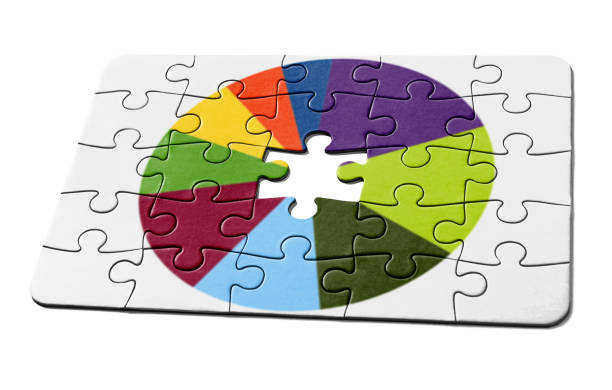Hey there, fellow finance enthusiasts! Grab your favorite cup of coffee, get comfy, and let’s have a chat about something that often sounds intimidating but is actually fascinating once you break it down—CRR and Repo Rate. Today, we’ll unravel the mysteries behind these two crucial financial tools and explore how they affect not just the economy but your day-to-day finances as well. Whether you’re a seasoned investor or just dipping your toes into the world of finance, understanding these concepts can give you a clearer picture of how money flows around us.
Have you ever wondered why suddenly home loan interest rates spike, or why banks seem a bit stingy with loans sometimes? Well, the answers often lie in the RBI’s tweaking of the CRR and Repo Rate. Trust me, these aren’t just numbers for economists to debate—they directly influence your pocket!

Demystifying CRR and Repo Rate in Today’s Finance World
What is CRR and Why It Matters
Let’s start with the Cash Reserve Ratio, or CRR. Picture this: You deposit Rs.100 in your bank. Sounds simple, right? But here’s a twist—the bank isn’t allowed to use all of that money to give loans or invest. A portion, say 4-5% (depending on RBI guidelines at the moment), has to be parked safely with the Reserve Bank of India. That reserved portion is the CRR.
Why does the RBI ask banks to do this? It’s all about keeping the banking system stable. Think of it like a financial cushion:
- Safeguard for emergencies: If too many people withdraw money at once, banks have a reserve to fall back on.
- Regulating liquidity: By controlling CRR, RBI can influence how much banks can lend, affecting money supply in the economy.
Here’s a little story—last month, I went to open a small FD (fixed deposit) at my local bank. The branch manager casually mentioned that the bank had slightly reduced lending due to a CRR hike. It hit me then—these policies aren’t just abstract numbers; they shape how we borrow, save, and spend.
What is Repo Rate and Its Role in Finance
Now, let’s talk about the Repo Rate. Imagine banks running low on cash—they need funds fast. They borrow this money from the RBI at an interest rate called the Repo Rate. Sounds simple, right? But here’s where it gets interesting: this rate influences how expensive or cheap loans become for consumers.
- Higher Repo Rate: Banks pay more to borrow money. Naturally, they pass on the cost to you and me, so loans get pricier.
- Lower Repo Rate: Cheaper borrowing for banks, which can mean lower interest rates on your personal loans, home loans, and even credit cards.
Just last quarter, RBI lowered the Repo Rate by 0.25%, and within weeks, banks started reducing home loan interest rates. I actually called my friend who was planning to buy a car—he ended up saving thousands just because he timed his loan right!
How CRR and Repo Rate Influence Money Creation
Ever wondered how money “multiplies” in the economy? It’s like a chain reaction. When banks lend out money, that money gets deposited elsewhere, then lent out again, and the cycle continues. This process is heavily influenced by CRR and Repo Rate.
- CRR’s effect: If RBI hikes CRR, banks have less money to lend, slowing down money creation. Conversely, lowering CRR increases liquidity.
- Repo Rate’s effect: High Repo Rate makes borrowing costly, discouraging loans. Low Repo Rate encourages borrowing, fueling economic activity.
Think of it like cooking—too much or too little of an ingredient can completely change the dish. CRR and Repo Rate are just the spices that regulate the flavor of the economy.
CRR, Repo Rate, and Inflation: Keeping Prices in Check
Inflation is that sneaky beast that eats away at our purchasing power. Luckily, RBI has tools to tame it, and CRR and Repo Rate are right at the front lines.
- Repo Rate and borrowing costs: When rates rise, borrowing slows down, spending drops, and inflation eases.
- CRR and lending capacity: Higher CRR means banks have less money to lend, which naturally limits spending in the economy.
Remember 2023, when food and fuel prices were soaring? RBI increased the Repo Rate, and within a few months, inflation started cooling down. It’s like steering a massive ship—the changes are gradual but impactful.
Practical Implications for Your Finances
So, how does all this theory impact you and me? Let’s break it down:
- Home Loans: Keep an eye on Repo Rate changes. A reduction might be your cue to refinance or buy a home.
- Personal Loans & Credit Cards: Interest rates often move with Repo Rate trends. Knowing this can help you time big purchases.
- Savings Accounts & FDs: CRR and Repo Rate tweaks can influence the interest banks offer on deposits.
- Investment Decisions: Money supply impacts stock markets and bond yields. Understanding these indicators helps in smarter investment choices.
A quick personal anecdote—I was planning a small renovation last year. By tracking RBI announcements, I decided to delay my bank loan by a month when Repo Rate was high. That simple timing saved me around Rs.12,000 in interest! Small steps, big impact.
Current Trends and 2025 Updates
As of 2025, here’s what’s happening in the RBI landscape:
- CRR at 4.5%: Maintaining a balanced liquidity approach.
- Repo Rate steady at 6.25%: Aimed at controlling inflation while supporting growth.
- Focus on digital banking: With faster transactions, CRR and liquidity management are more crucial than ever.
- Impact of global financial trends: RBI is watching US Federal Reserve moves and commodity price fluctuations closely to adjust domestic policy.
Does that make sense? The global economy isn’t isolated—our interest rates and banking rules are reacting to external shifts too, so staying informed is key.
Wrapping It Up: Empower Yourself with Finance Knowledge
Understanding CRR and Repo Rate in the economy isn’t just for economists. These tools have a direct ripple effect on your loans, savings, investments, and spending power. By keeping an eye on RBI policies, you can make smarter, timely decisions that protect your wallet and optimize your financial growth.
So next time you hear about a Repo Rate hike or a CRR adjustment, you won’t just nod along—you’ll know exactly how it might affect your bank balance, your loans, and even your shopping spree plans. Stay curious, stay informed, and let’s continue exploring the fascinating world of finance together!

